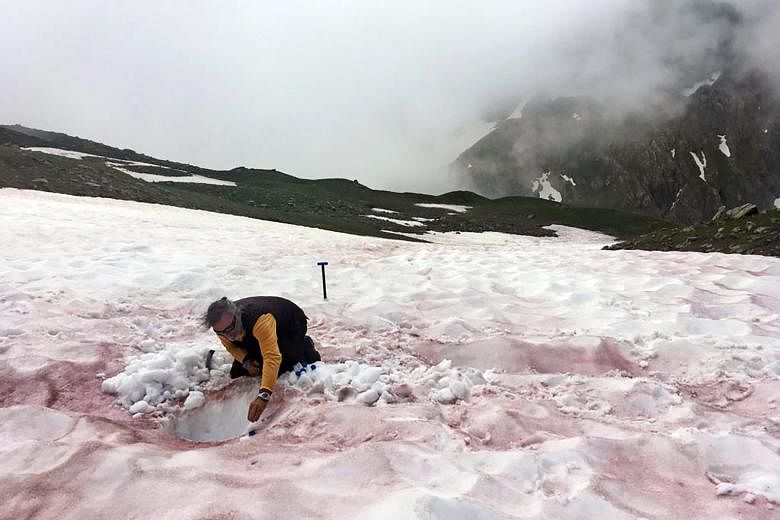GRENOBLE (France) • Winter through spring, the French Alps are wrapped in austere white snow. But as spring turns to summer, the stoic slopes start to blush.
Parts of the snow take on bright colours - deep red, rusty orange, lemonade pink.
Locals call this sang de glacier, or glacier blood. Visitors sometimes go with "watermelon snow". In reality, these blushes come from an embarrassment of algae.
In recent years, alpine habitats all over the world have experienced an uptick in snow-algae blooms - dramatic, strangely hued aggregations of these normally invisible creatures.
While snow-algae blooms are poorly understood, the fact that they are happening is probably not a good sign.
Researchers have begun surveying the algae of the Alps to better grasp what species live there, how they survive and what might be pushing them over the bleeding edge. Some of their initial findings were published last week in Frontiers in Plant Science.
Tiny yet powerful, the plant-like bacteria we call algae are "the basis of all ecosystems", said Ms Adeline Stewart, a doctoral student at Grenoble Alpes University in France and co-author of the study.
Thanks to their photosynthetic prowess, algae produce a large amount of the world's oxygen and form the foundation of most food webs. But they sometimes overdo it, multiplying until they throw things out of balance. This can cause toxic red tides, scummy freshwater blooms and unsettling glacier blood.
While it is unclear exactly what spurs the blooms, the colour - often red, but sometimes green, grey or yellow - comes from pigments and other molecules that the snow algae use to protect themselves from ultraviolet light. These hues absorb more sunlight, causing the underlying snow to melt more quickly. This can change ecosystem dynamics and hasten the shrinking of glaciers.
NYTIMES

